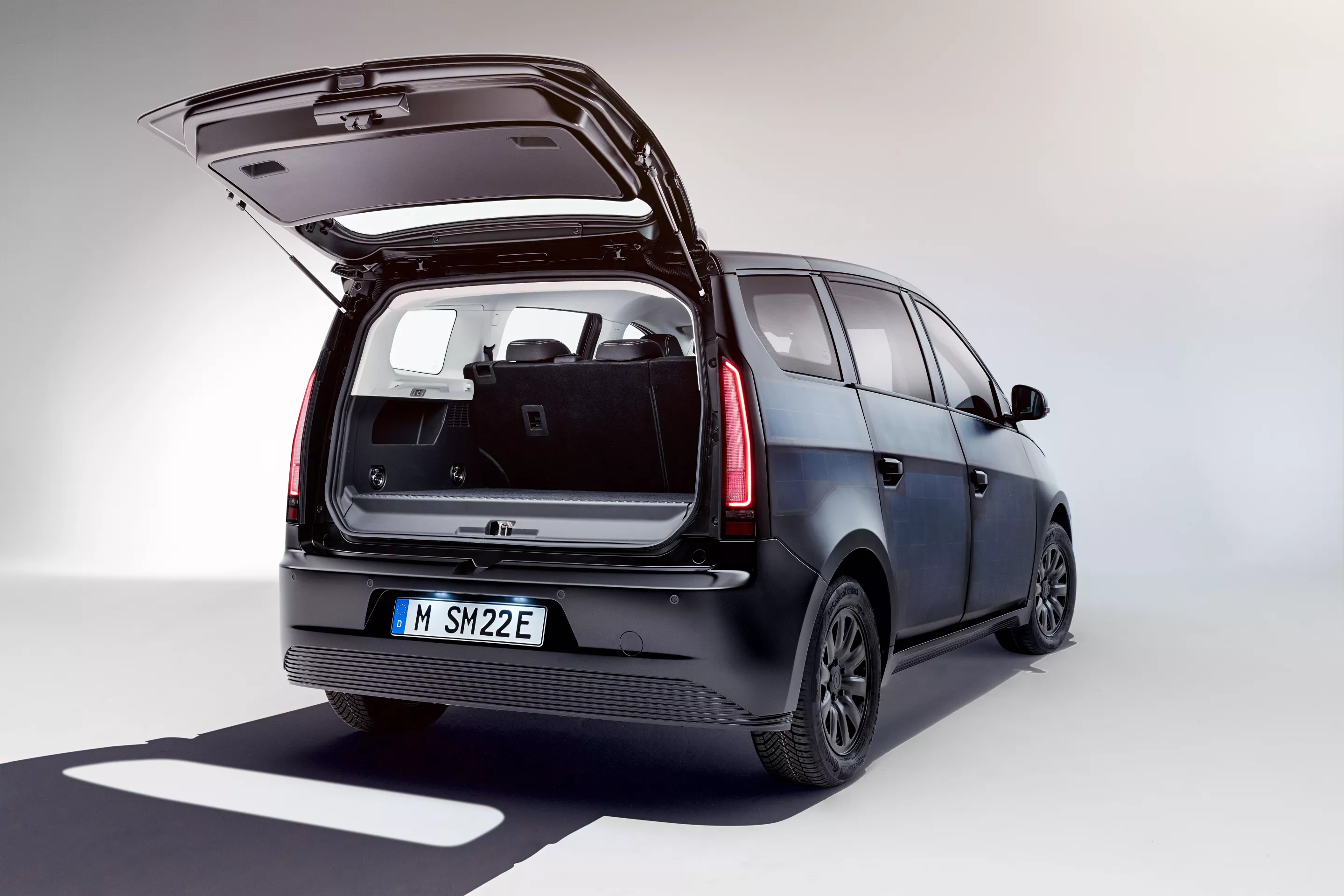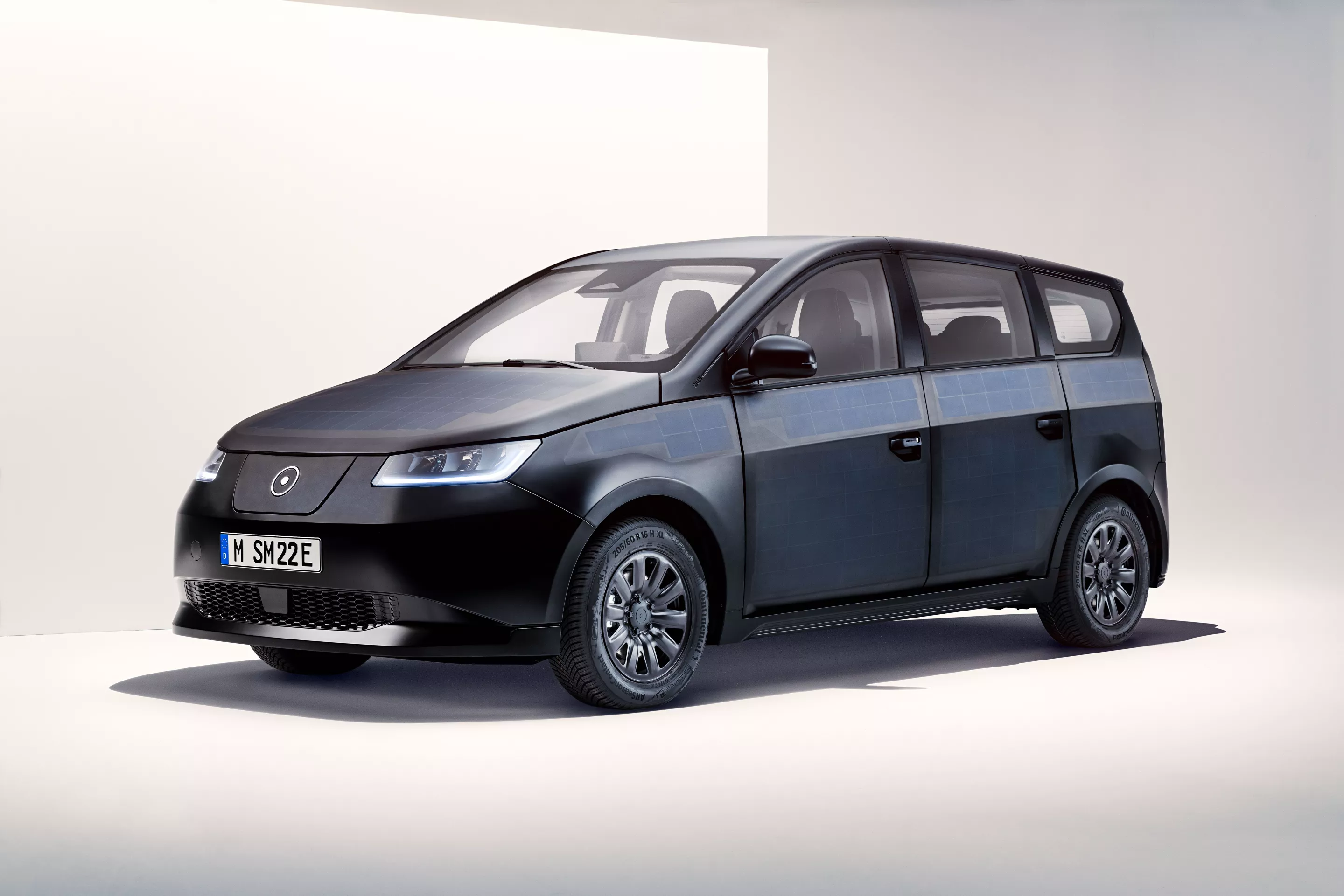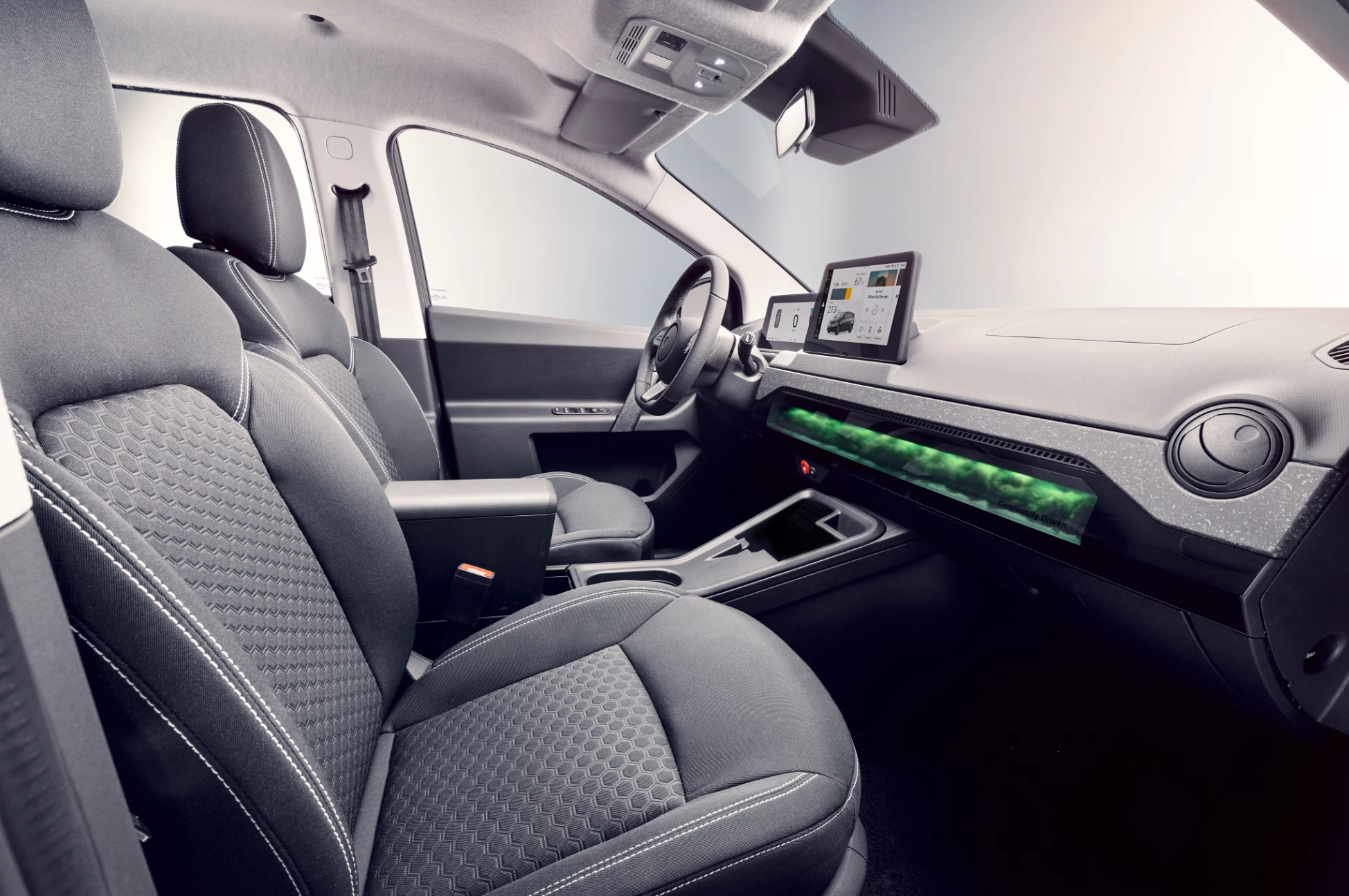After building 37 series-validation prototypes and kicking off a comprehensive testing program, German automotive startup Sono Motors has now revealed the final production design for the upcoming Sion solar-electric passenger car, plus a solar add-on kit for fleets of buses.
The Sion's long road to production began as a garage project in Munich, with Sono Motors GmbH subsequently founded in 2016 by Laurin Hahn and Jona Christians. The first renders were released later that year as part of an Indiegogo crowdfunding campaign, with an Urban flavor carrying a target priced at just €12,000 and an longer-range version coming in at €16,000.
The initial pre-order books were opened up in the middle of the following year. Development continued apace, with exterior design images and a first look at the interior released in 2019. The company then debuted a slick-looking Sion prototype for the online-only CES 2021, and most recently started building series-validation prototypes and test mules for testing on tracks and public roads in Europe and the US – which includes homologation and crash tests.
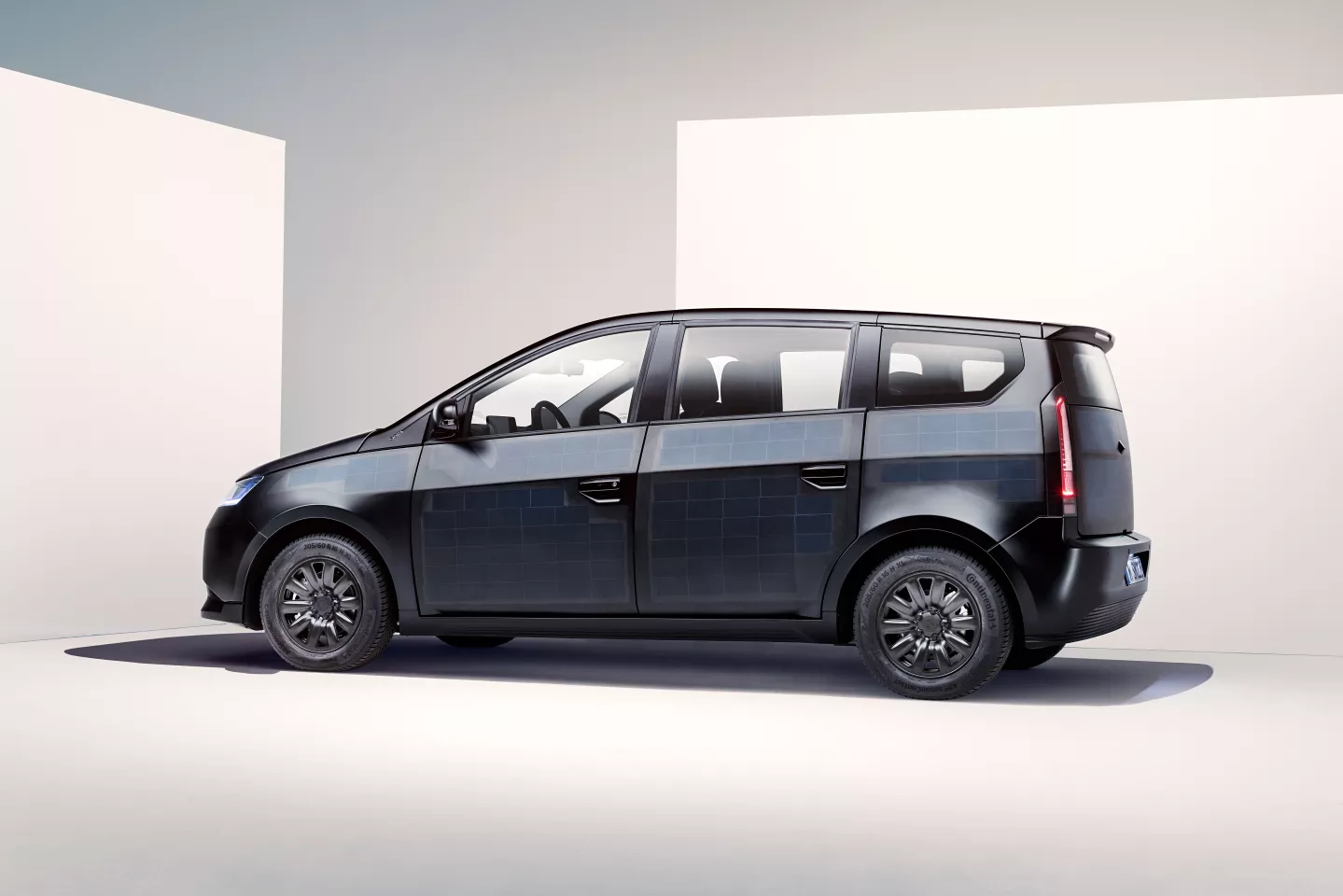
Now, the final production design for the Sion solar-electric vehicle has been unveiled at an in-person and streamed "Celebrate the Sun" community event in Munich.
Some 456 photovoltaic half-cells will be seamlessly integrated into exterior surfaces like the hood, roof and doors, which are expected to extend the included 54-kWh LFP battery pack's per-charge range of 305 km (189.5 miles) by an average of 112 km (69.5 miles) per week – though that figure could rise to as much as 245 km, depending on local conditions.
"Commuters in German metropolitan areas will have to charge their Sion up four times less than conventional electric cars of the same vehicle class with a similar battery size," reads the press release.
When drivers do need to plug in, 75-kW DC and 11-kW AC charging capacities are supported. Bidirectional charging has been cooked in too, allowing the vehicle to serve as a power source for "electronic devices, the home or other electric cars with an output of up to 11 kW."
Elsewhere, the redesign includes "fewer lines and clearer surfaces" inside and out, such as a more streamlined rear end with a new camera system and 3D lines, new headlights with a new charging lid inbetween, a fresh bottom sideline design, reworked rear lighting, and brand new door handles.

Though the interiors of the prototypes produced so far haven't appeared particularly cluttered, the final production models will reportedly have a more spacious, cleaner feel with more storage available. The intriguing moss-based natural air filtration system still takes center stage, but the front seats and rear bench are new, as is the steering wheel. And customers will be offered new color and trim options for interior surfaces.
Key performance specs for the front-wheel-drive vehicle – such as the 140 km (87 mph) top speed, 270 Nm (199 lb.ft) of torque and nine-second standstill to 100 km/h (0-62 mph) – appear to be unchanged.
At the beginning of this month, Sono Motors had attracted some 19,000 active private reservations, with the estimated final net sales price point currently standing at €25,126 (about US$25,700). Series production is still on schedule for the second half of 2023, and the company expects to ramp up output to around 257,000 vehicles within seven years.
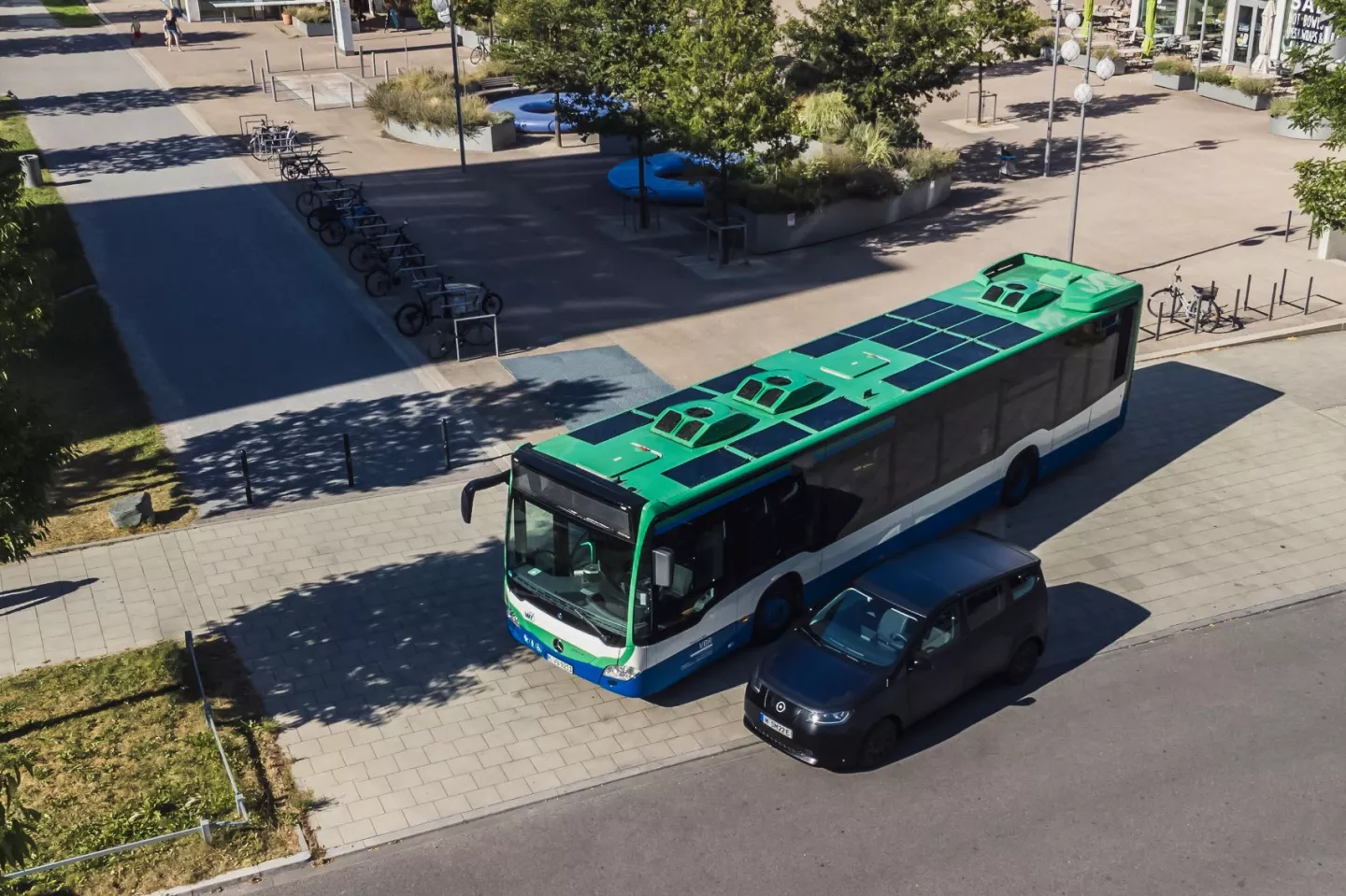
As mentioned earlier, Sono Motors made two announcements today. Following a trial with transport company Münchner Verkehrsgesellschaft (MVG), the company is now launching a new Solar Bus Kit that will add photovoltaic panels to the top of "the most common 12-meter [39.3-ft] public transport bus types on the European market, including Mercedes-Benz Citaro and MAN Lion City."
The Kit is designed to help cut fuel costs on existing combustion engine buses by powering subsystems like the HVAC, with a peak installation of around 8 sq m (86 sq ft) of solar panels at 1.4 kW potentially saving up to 1,500 liters (396 gal) of diesel and up to 4 tonnes of CO2 per bus per year, according to Sono.
But the company isn't stopping at integrations on buses, it's reportedly working with 19 companies around the world at the moment to implement its Sono Solar Technology on such things as trailers, trucks and electric transporters.
Source: Sono Motors


